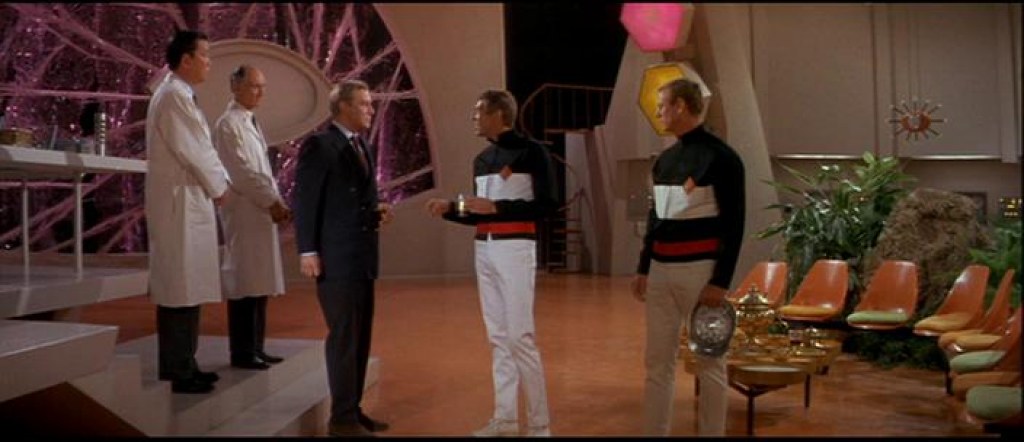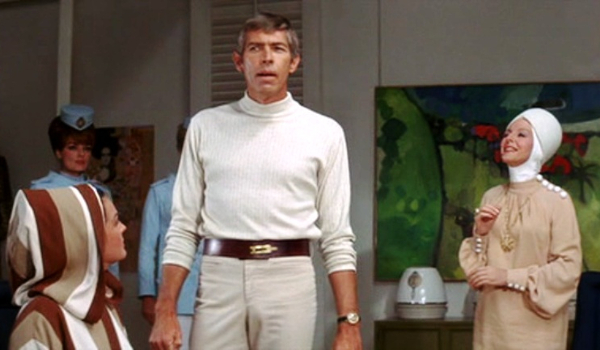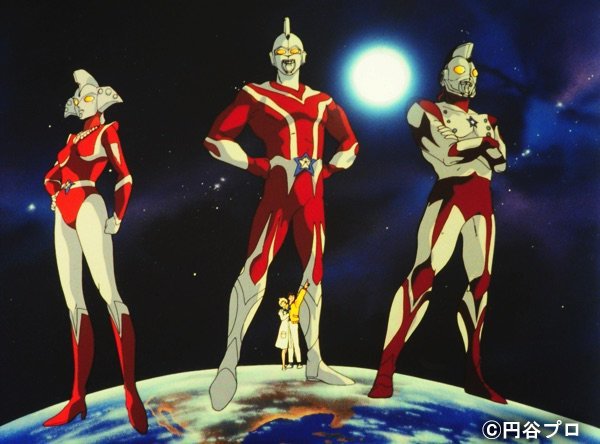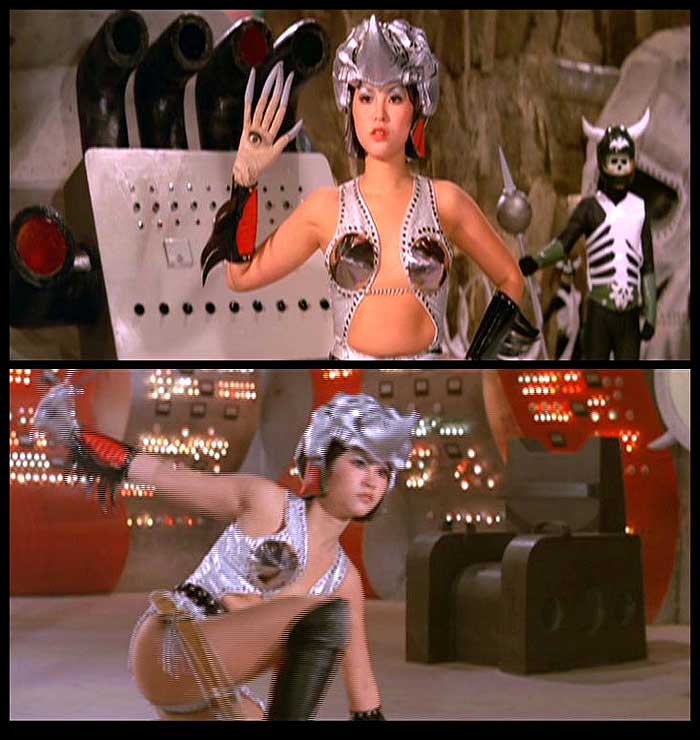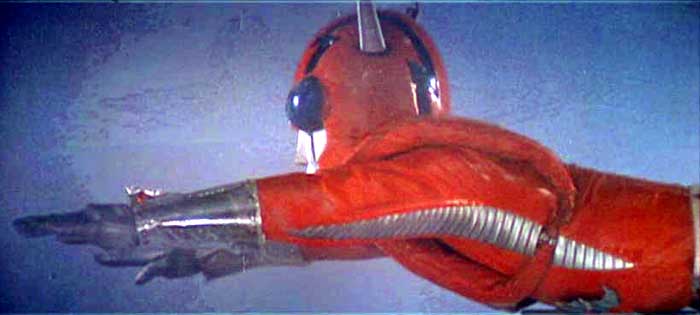Post by codystarbuck on Apr 26, 2020 19:06:52 GMT -5
If there was a rival for Western herodom, to the Lone Ranger, it was probably The Cisco Kid.
The Cisco Kid made his debut in 1907, in a short story by O. Henrym titled "The Caballero's Way." However, the Cisko Kid in this story is not a hero; he's a vicious killer and an Anglo, possibly named Goodall. He has a girlfriend Tonia Perez, who is of mixed ancestry. While the Kid is away, a Texas Ranger comes tracking and meets Tonia. She falls for him and the Kid returns to find them together. he overhears the Ranger ask Tonia to help alert when the Kid returns. The Kid sets up Tonia, sending word through others that he has returned and exchanged clothes with Tonia, to sneak away. the Ranger comes, sees two figures and the one in male clothes leaves. The Ranger shoiots the one in female attire, but finds he has been tricked and gunned down Tonia.
The story was first adapted in 1914, in a silent film of the same title.

A second Cisco Kid silent film, The Border Terror appeared in 1919. In 1928, the first talkie appeared, with Warner Baxter as a more sympathetic Kid, in In Old Arizona....
The film follows the O. Henry story, but places Cisco in a brighter light. Cisco robs a stagecoach, but not the passengers, paying gold for a jeweled item for his grilfriend, Tonia Maria. Word travels and an Army sergeant is sent to capture him. He runs into Cisco at a barbershop but is unaware the man is his quarry until told after. Tonia Maria is unfaithful to Cisco and starts up an affair with the soldier. When Cisco learns of it, he fakes a letter to the soldier and sets him up to kill Tonia, allowing him to escape.
The film won Baxter the second ever Best Actor Oscar and the film received a few other nominations. It was one of the first sound films, period, and the first to shoot outdoors, using natural sounds and taking advantage of shooting in Bryce Canyon and Zion National Park.
Here, Chon Noriega and Robert Osborne discuss Baxter and the film's significance to Latino images in film...
Baxter returns in 4 sequels: The Arizona Kid, The Cisco Kid, The Stolen Jools, and The Return of the Cisco Kid, from 1930-1939. The Cisco Kid sees the Army sergeant, mickey Dunn, get another crack at Cisco. In these films, Cisco is more of a Robin Hood figure, rather than a hardened criminal. He is a romantic figure, more playful than deadly, though still a crack shot. he also acquires a sidekick, by this point, Lopez. The films also establish the concept of the "singing cowboy," as Baxter sings a song in each, paving the way for future Western stars, like Gene Autrey and Roy Rogers, as well as Western singers, like Frankie Lane and Tex Ritter. On a less positive note, Baxter's heavy "Theek" accent set the screen standard for how Mexicans were generally portrayed in film.
Cisco is firmly a hero in The Cisco Kid, as he robs a bank to support a woman and two children, who are alone in the world. Dunn finally catches up to him and lets him go because of his true nature.
The Stolen Jools was actually a star cameo film to raise money for The National Vaudeville Artists Tuberculosis Sanitarium and featured a host of stars, including Baxter as Cisco. 1939's The Return of the Cisco Kid was Baxter's last and brought Cesar Romero to the series, as Lopez. Romero would then take over the role for 6 films. The first, The Cisco Kid and the Lady, has Cisco, his pal Gordito, and Harbison bequeethed a section of a map of a gold mine, provided they take care of the dying prospector's baby. The film is pretty much a comedy, with adventure pieces, as Cisco and Gordito forget the baby on the road and it is picked up by a woman on a stagecoach. Cisco remembers the baby and chases down the coach and finds the kid in the arms of a beautiful lady and falls for her. The film is filled with Cisco and Gordito trying to watch the kid and a budding romance with the woman, a teacher, plus the search for the gold mine.
In Lucky Cisco Kid, Cisco is framed for a series of robberies and he and Gordito must catch them and prove their innocence. Viva Cisco Kid focuses more on the romantic life of the kid, as one love sets him up for capture by the Army (he escapes) and he soon falls for another, but must leave her as a wanted outlaw. The Gay Caballero finds Cisco and Gordito entering a twon where he is believed dead, killed while trying to steal a woman's land. he must again prove his innocence. Romance of the rio Grande finds Romero in a dual role, as the son of Don Fernando de la Vega, Carlos, who is shot by his cousin, who seeks to steal his future inheritance. Cisco finds the wounded Carlos and gets him to a doctor, then impersonates Carlos to Don Fernando and defeats the schemes of Ricardo, the Don's nephew.






The war interrupted Romero's run as Cisco, as he enlisted in the US Coast Guard and served in the Pacific theater, at Tinian and Saipan...

Romero rose to the rank of Chief Boatswain's Mate, before leaving. Romero was actually the first Latin actor to portray Cisco (Baxter was from Ohio), and would help foster in more Latino actors into the film and tv series, though the film would next star another of European ancestry.
Duncan Renaldo (Renaldo was born in Romania) took over the role in 1945, for 3 films: The Cisco Kid Retruns, In Old New Mexico, and South of the Rio Grande. This is where Pancho debuts as Cisco's sidekick. The first film sees Cisco framed for murder charges, while his girl is the object of the affections of a rival. He and Pancho must clear his name and stop his girl from going off with the rival. In Old New Mexico, Cisco and Pancho are road bandits who kidnap a woman, a nurse, who tells a tale of being framed for murder. Cisco and Pancho agree to help the lady in distress and fake a ransom of her, then claim a reward, before clearing her name. The third film sees Cisco and Pancho in mexico, as they go undercover at the ranch of a corrupt politician to expose him and free the town of his rule.



1946 saw Latin actor Gilbert Roland take over for 6 films: The Gay Cavalier, South of Monterey, Beauty and the Bandit, Riding the California Trail, Robin Hood of Monterey, and King of the Bandits. In The Gay Cavalier, Cisco must stop a woman from marrying a wealthy man to save her family's hacienda, forsaking her true love, while also solve the theft of gold meant for a mission. Cisco discovers that the suitor is behind the robbery. These films (and Renaldos) were done for Monogram Pictures, one of the Poverty Row studios, which churned out westerns, while Romero's had been for Fox. Roland is aided by Frank Yanconelli, as baby in his early films (and Nacho Galindo as the character, in the first), before Chris Pin-Martin returns as Pancho, from the Renaldo series.
Renaldo returned for 5 more Ciscos, with Leo Carillo as Pancho: The Valiant Hombre, the Gay Amigo, The Daring Caballero, Satan's Cradle, the Girl from San Lorenzo. These are pretty formulaic, with the chemistry between Renaldo's Cisco and Carillo's Pancho firmly established, which would lead to the tv series, in 1950...
The series established Leo Carillo as the first Latino to co-star in a tv series (Desi Arnaz would not appear on tv until the following year, with Lucille Ball) and followed on from the film series. technically, Cisco and Pancho are wanted outlaws, but their hearts are gold as they aid those is distress, with their crimes aiding the poor and in need. The series was broadcast in the same period as The Lone Ranger and both presented heroic images to Baby Boomer kids of the 50s and established a legacy of decades of entertaining reruns (I saw some of it on WGN, in the late 70s and 80s). Renaldo and Carillo became beloved figures and the series is mostly kept light, with Pancho providing much of the comic relief, with his mangled accent and corny jokes. However, they are heroic figures who stand up for the little people and help bring justice to the West. Unlike the Lone Ranger, Cisco is a romantic figure, which gives him a more rounded characterization, though more in the film series than tv.
The series ended in 1956, but reruns kept it alive for years. However, Hollywood turned its back on Cisco and Pancho, until 1994, when Luis Valdez turned his eye to creating a remake, for TNT. Here, finally, was a chance for a Latino filmmaker to reclaim this Latino hero from the realm of Hollywood stereotypes. Cisco was always a valiant hero, a great lover and a good friend; in all, a positive rolde model. however, it was filtered through the Hollywood idea of Mexican accents and characteristics, robbing Latino's of a hero who was a whole character, unlike his European counterparts. Valdez set out to make Cisco and Pancho more accurately reflect Latin history and culture.
The film is set during the French Second Intervention in Mexico (1861-67) when Napoleon III took advantage of the American Civil War to enter into an agreement with Spain and the United Kingdom to establish a mopnarchy in mexico, to exploit its natural resources, particularly its silver. France double-crossed Spain and the UK, who withdrew from the pact; but, the French established a puppet emperor, Maximilian, in Mexico. the French were aided by Mexican nobility, the Church and some Native communities, who had opposed the policies of the Republic, under Benito Juarez. A guerrilla war ensued and the French were driven from Mexico and Maximilian was executed. Juarez was returned to power and governed until his death, in 1872.
Cisco and Pancho are in a prison, about to be executed, when an attack by rebels frees them. They are still chained together and steal a burro, to escape. they come across a tax colelctor taking money from villagers, overcome him and use soldiers' guns to free themselves of the chains. Pancho takes Cisco to his village, which is suffering under the French. They join Benito Juarez's fight to overthrow the French and become involved in the battles and schemes.
Jimmy Smits is well cast as Cisco, the reluctant hero who finds himself pushed into the role, but grows with it as he is inspired to take up the fight. Cheech marin is Pancho, the poorer of the pair, who has seen the suffering and opens Cisco's eyes. Despite their initial conflict, they become fast friends and by end are true amigos. Essentially, the film provides an origin for Cisco and Pancho that could then segue into their deeds in the tv series, but does so by portraying them as more realistic people, with virtues and faults. It eliminates the stereotyped accent and also gives Cheech a chance to play a more straight character, though he indulges in plenty of comedy. Smits had been wowing audiences on LA Law and a turn as a villain, in Running Scared (with Billy Crystal and Gregory Hines). Ron Perlman is a French colonel, at the heart of their schemes.
The film succeeded in capturing both the spirit of the tv series and in moderninzing it and presenting a truer look at Mexican heroes. Cisco is still a smooth, romantic hero; but, he has to earn the support of the people by growing into the role, while Pancho is less the comedic sidekick and more an equal partner, who helps Cisco understand what is at stake.
With Hollywood wanting to remake everything, it would seem that the tv movie would point the way to a potentially huge franchise, especially given the Latino population in the US, as well as the global potential, provided similar care was done to cast Latino actors and use Latino filmmakers to give it authenticity. Imagine a film by Guillermo del Toro, with actors like Antonio Banderas, Salma Hayek, Benicio del Toro, Javier Bardem, or other noted actors. Besides, it would be nice to see a series of films about a Mexican hero to counteract the ignorance of certain politicians and extremist groups.
Next, we leave the Old West and head to the Seven Seas in search of adventure, with Captain Sinbad and his crew, as he faces wizards, monsters, skeletons, minotaurs, tigers, and animated statues of Kali, before setting his sights on being a stand-up comedian.
The Cisco Kid made his debut in 1907, in a short story by O. Henrym titled "The Caballero's Way." However, the Cisko Kid in this story is not a hero; he's a vicious killer and an Anglo, possibly named Goodall. He has a girlfriend Tonia Perez, who is of mixed ancestry. While the Kid is away, a Texas Ranger comes tracking and meets Tonia. She falls for him and the Kid returns to find them together. he overhears the Ranger ask Tonia to help alert when the Kid returns. The Kid sets up Tonia, sending word through others that he has returned and exchanged clothes with Tonia, to sneak away. the Ranger comes, sees two figures and the one in male clothes leaves. The Ranger shoiots the one in female attire, but finds he has been tricked and gunned down Tonia.
The story was first adapted in 1914, in a silent film of the same title.

A second Cisco Kid silent film, The Border Terror appeared in 1919. In 1928, the first talkie appeared, with Warner Baxter as a more sympathetic Kid, in In Old Arizona....
The film follows the O. Henry story, but places Cisco in a brighter light. Cisco robs a stagecoach, but not the passengers, paying gold for a jeweled item for his grilfriend, Tonia Maria. Word travels and an Army sergeant is sent to capture him. He runs into Cisco at a barbershop but is unaware the man is his quarry until told after. Tonia Maria is unfaithful to Cisco and starts up an affair with the soldier. When Cisco learns of it, he fakes a letter to the soldier and sets him up to kill Tonia, allowing him to escape.
The film won Baxter the second ever Best Actor Oscar and the film received a few other nominations. It was one of the first sound films, period, and the first to shoot outdoors, using natural sounds and taking advantage of shooting in Bryce Canyon and Zion National Park.
Here, Chon Noriega and Robert Osborne discuss Baxter and the film's significance to Latino images in film...
Baxter returns in 4 sequels: The Arizona Kid, The Cisco Kid, The Stolen Jools, and The Return of the Cisco Kid, from 1930-1939. The Cisco Kid sees the Army sergeant, mickey Dunn, get another crack at Cisco. In these films, Cisco is more of a Robin Hood figure, rather than a hardened criminal. He is a romantic figure, more playful than deadly, though still a crack shot. he also acquires a sidekick, by this point, Lopez. The films also establish the concept of the "singing cowboy," as Baxter sings a song in each, paving the way for future Western stars, like Gene Autrey and Roy Rogers, as well as Western singers, like Frankie Lane and Tex Ritter. On a less positive note, Baxter's heavy "Theek" accent set the screen standard for how Mexicans were generally portrayed in film.
Cisco is firmly a hero in The Cisco Kid, as he robs a bank to support a woman and two children, who are alone in the world. Dunn finally catches up to him and lets him go because of his true nature.
The Stolen Jools was actually a star cameo film to raise money for The National Vaudeville Artists Tuberculosis Sanitarium and featured a host of stars, including Baxter as Cisco. 1939's The Return of the Cisco Kid was Baxter's last and brought Cesar Romero to the series, as Lopez. Romero would then take over the role for 6 films. The first, The Cisco Kid and the Lady, has Cisco, his pal Gordito, and Harbison bequeethed a section of a map of a gold mine, provided they take care of the dying prospector's baby. The film is pretty much a comedy, with adventure pieces, as Cisco and Gordito forget the baby on the road and it is picked up by a woman on a stagecoach. Cisco remembers the baby and chases down the coach and finds the kid in the arms of a beautiful lady and falls for her. The film is filled with Cisco and Gordito trying to watch the kid and a budding romance with the woman, a teacher, plus the search for the gold mine.
In Lucky Cisco Kid, Cisco is framed for a series of robberies and he and Gordito must catch them and prove their innocence. Viva Cisco Kid focuses more on the romantic life of the kid, as one love sets him up for capture by the Army (he escapes) and he soon falls for another, but must leave her as a wanted outlaw. The Gay Caballero finds Cisco and Gordito entering a twon where he is believed dead, killed while trying to steal a woman's land. he must again prove his innocence. Romance of the rio Grande finds Romero in a dual role, as the son of Don Fernando de la Vega, Carlos, who is shot by his cousin, who seeks to steal his future inheritance. Cisco finds the wounded Carlos and gets him to a doctor, then impersonates Carlos to Don Fernando and defeats the schemes of Ricardo, the Don's nephew.






The war interrupted Romero's run as Cisco, as he enlisted in the US Coast Guard and served in the Pacific theater, at Tinian and Saipan...

Romero rose to the rank of Chief Boatswain's Mate, before leaving. Romero was actually the first Latin actor to portray Cisco (Baxter was from Ohio), and would help foster in more Latino actors into the film and tv series, though the film would next star another of European ancestry.
Duncan Renaldo (Renaldo was born in Romania) took over the role in 1945, for 3 films: The Cisco Kid Retruns, In Old New Mexico, and South of the Rio Grande. This is where Pancho debuts as Cisco's sidekick. The first film sees Cisco framed for murder charges, while his girl is the object of the affections of a rival. He and Pancho must clear his name and stop his girl from going off with the rival. In Old New Mexico, Cisco and Pancho are road bandits who kidnap a woman, a nurse, who tells a tale of being framed for murder. Cisco and Pancho agree to help the lady in distress and fake a ransom of her, then claim a reward, before clearing her name. The third film sees Cisco and Pancho in mexico, as they go undercover at the ranch of a corrupt politician to expose him and free the town of his rule.



1946 saw Latin actor Gilbert Roland take over for 6 films: The Gay Cavalier, South of Monterey, Beauty and the Bandit, Riding the California Trail, Robin Hood of Monterey, and King of the Bandits. In The Gay Cavalier, Cisco must stop a woman from marrying a wealthy man to save her family's hacienda, forsaking her true love, while also solve the theft of gold meant for a mission. Cisco discovers that the suitor is behind the robbery. These films (and Renaldos) were done for Monogram Pictures, one of the Poverty Row studios, which churned out westerns, while Romero's had been for Fox. Roland is aided by Frank Yanconelli, as baby in his early films (and Nacho Galindo as the character, in the first), before Chris Pin-Martin returns as Pancho, from the Renaldo series.
Renaldo returned for 5 more Ciscos, with Leo Carillo as Pancho: The Valiant Hombre, the Gay Amigo, The Daring Caballero, Satan's Cradle, the Girl from San Lorenzo. These are pretty formulaic, with the chemistry between Renaldo's Cisco and Carillo's Pancho firmly established, which would lead to the tv series, in 1950...
The series established Leo Carillo as the first Latino to co-star in a tv series (Desi Arnaz would not appear on tv until the following year, with Lucille Ball) and followed on from the film series. technically, Cisco and Pancho are wanted outlaws, but their hearts are gold as they aid those is distress, with their crimes aiding the poor and in need. The series was broadcast in the same period as The Lone Ranger and both presented heroic images to Baby Boomer kids of the 50s and established a legacy of decades of entertaining reruns (I saw some of it on WGN, in the late 70s and 80s). Renaldo and Carillo became beloved figures and the series is mostly kept light, with Pancho providing much of the comic relief, with his mangled accent and corny jokes. However, they are heroic figures who stand up for the little people and help bring justice to the West. Unlike the Lone Ranger, Cisco is a romantic figure, which gives him a more rounded characterization, though more in the film series than tv.
The series ended in 1956, but reruns kept it alive for years. However, Hollywood turned its back on Cisco and Pancho, until 1994, when Luis Valdez turned his eye to creating a remake, for TNT. Here, finally, was a chance for a Latino filmmaker to reclaim this Latino hero from the realm of Hollywood stereotypes. Cisco was always a valiant hero, a great lover and a good friend; in all, a positive rolde model. however, it was filtered through the Hollywood idea of Mexican accents and characteristics, robbing Latino's of a hero who was a whole character, unlike his European counterparts. Valdez set out to make Cisco and Pancho more accurately reflect Latin history and culture.
The film is set during the French Second Intervention in Mexico (1861-67) when Napoleon III took advantage of the American Civil War to enter into an agreement with Spain and the United Kingdom to establish a mopnarchy in mexico, to exploit its natural resources, particularly its silver. France double-crossed Spain and the UK, who withdrew from the pact; but, the French established a puppet emperor, Maximilian, in Mexico. the French were aided by Mexican nobility, the Church and some Native communities, who had opposed the policies of the Republic, under Benito Juarez. A guerrilla war ensued and the French were driven from Mexico and Maximilian was executed. Juarez was returned to power and governed until his death, in 1872.
Cisco and Pancho are in a prison, about to be executed, when an attack by rebels frees them. They are still chained together and steal a burro, to escape. they come across a tax colelctor taking money from villagers, overcome him and use soldiers' guns to free themselves of the chains. Pancho takes Cisco to his village, which is suffering under the French. They join Benito Juarez's fight to overthrow the French and become involved in the battles and schemes.
Jimmy Smits is well cast as Cisco, the reluctant hero who finds himself pushed into the role, but grows with it as he is inspired to take up the fight. Cheech marin is Pancho, the poorer of the pair, who has seen the suffering and opens Cisco's eyes. Despite their initial conflict, they become fast friends and by end are true amigos. Essentially, the film provides an origin for Cisco and Pancho that could then segue into their deeds in the tv series, but does so by portraying them as more realistic people, with virtues and faults. It eliminates the stereotyped accent and also gives Cheech a chance to play a more straight character, though he indulges in plenty of comedy. Smits had been wowing audiences on LA Law and a turn as a villain, in Running Scared (with Billy Crystal and Gregory Hines). Ron Perlman is a French colonel, at the heart of their schemes.
The film succeeded in capturing both the spirit of the tv series and in moderninzing it and presenting a truer look at Mexican heroes. Cisco is still a smooth, romantic hero; but, he has to earn the support of the people by growing into the role, while Pancho is less the comedic sidekick and more an equal partner, who helps Cisco understand what is at stake.
With Hollywood wanting to remake everything, it would seem that the tv movie would point the way to a potentially huge franchise, especially given the Latino population in the US, as well as the global potential, provided similar care was done to cast Latino actors and use Latino filmmakers to give it authenticity. Imagine a film by Guillermo del Toro, with actors like Antonio Banderas, Salma Hayek, Benicio del Toro, Javier Bardem, or other noted actors. Besides, it would be nice to see a series of films about a Mexican hero to counteract the ignorance of certain politicians and extremist groups.
Next, we leave the Old West and head to the Seven Seas in search of adventure, with Captain Sinbad and his crew, as he faces wizards, monsters, skeletons, minotaurs, tigers, and animated statues of Kali, before setting his sights on being a stand-up comedian.





 ....
....
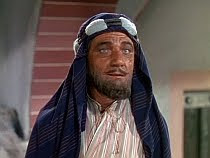
 ??
??

